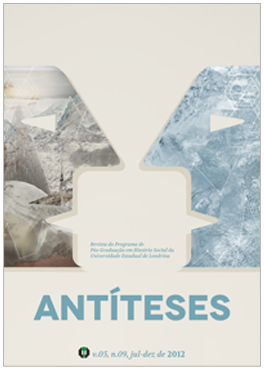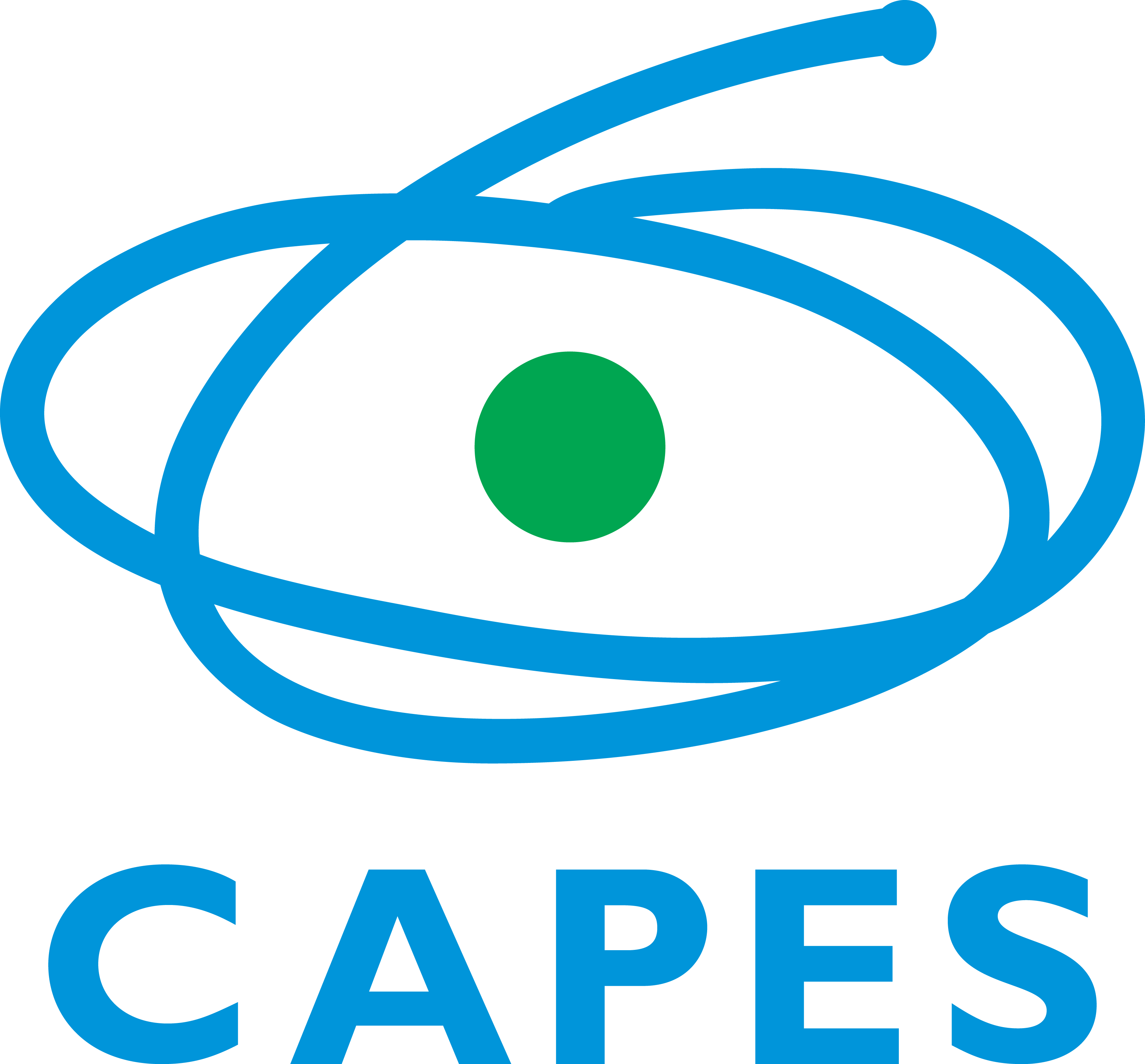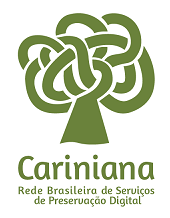The substantive concept of african slavery in Brazil: use and appropriations of textbook narratives by teacher and students
DOI:
https://doi.org/10.5433/1984-3356.2012v5n10p589Keywords:
History teaching, Historical education, Textbooks, Historical narratives, Substantive conceptAbstract
Drawing on authors who have been discussing the History textbook issue, especially Jörn Rüsen (1997, 2010, 2012), I seek to present in this work some of the results of the research that is being developed in my postdoctoral studies within the Postgraduate Programme in Education from the Federal University of Parana, more specifically within the Center for Research in Educational Publications, under the supervision of Professor Tânia Maria Braga Garcia. The results here presented focus more specifically on the use and appropriations, by students and teacher, of the historical narratives present in the textbook regarding the substantive concept of african slavery in Brazil. The target audience in question involved primary education, seventh grade students (11 to 13 years of age) from a school belonging to the Municipal Education System of Curitiba. Some considerations can be pointed out, one of which is that the textbook has been used by the teacher in a way it becomes the “visible text of the disciplinary code of school History” (CUESTA FERNANDEZ, 1997, 1998), one of the ways to teach and learn History. As to the appropriations of the textbook narratives by the students, it can be stated that they were explicit in their narratives, inasmuch as the students incorporated to their texts the ideas present in the textbook after the didactic intervention.Downloads
Download data is not yet available.
References
BAQUAQUA, Mahommah. Biografia de Mahommah G. Baquaqua. Revista Brasileira de História, São Paulo, v. 8, n. 16. p. 270-272, mar. 1988.
BARCA, Isabel. A construção de narrativas históricas: perspectivas de consciência histórica dos jovens portugueses. In: Anais do Encontro Nacional dos Pesquisadores do Ensino de História: Novos Problemas e Novas Abordagens, Belo Horizonte. Belo Horizonte: UFMG, 2006.
BERTONI, Mauro; MALERBA, Jurandir. Nossa gente brasileira: textos e atividades para o ensino fundamental. Campinas: Papirus, 2001.
BITTENCOURT, Circe. Livros didáticos entre textos e imagens. In: BITTENCOURT, Circe (org.). O saber histórico na sala de aula. São Paulo: Contexto, 2001.
BOGDAN, Robert; BIKLEN, Sari. Investigação qualitativa em educação. Porto: Porto, 1994.
CHESNEAUX. Jean. Devemos fazer tábula rasa do passado? São Paulo: Ática: 1995.
CUESTA FERNANDEZ, Raimundo. Clío en las aulas: la enseñanza de la historia en España entre reformas, ilusiones y rutinas. Madrid: Akal, 1998.
CUESTA FERNANDEZ, Raimundo. Sociogénesis de una disciplina escolar: la historia. Barcelona: Pomares-Corredor, 1997.
FORQUIN, Jean-Claude. Escola e cultura. Porto Alegre: Artes Médicas Sul, 1993.
FURET, François. A oficina da história. Lisboa: Gradiva, 1986.
GEVAERD, Rosi Terezinha Ferrarini. A narrativa histórica como uma maneira de ensinar e aprender história: o caso da história do Paraná. 2009. Tese (Doutorado em Educação) – Universidade Federal do Paraná, Curitiba, 2009.
LEE, Peter. Nós fabricamos carros e eles tinham que andar a pé: compreensão das pessoas do passado. In: BARCA, Isabel. (org.). Educação histórica e museus. Braga: Lusografe, 2003. p. 19-36.
LEE, Peter. Progressão da compreensão dos alunos em história. In: BARCA, Isabel. Perspectivas em educação histórica. Braga: CEEP, 2001. p. 13-27.
LEE, Peter. Putting principles into practice: understanding history. In: BRANSFORD, John; DONOVAN, Suzane. (ed.). How students learn: history in the classroom. Washington: National Academy Press, 2005. p. 29-78.
PELLEGRINI, Marco César; DIAS, Adriana Machado; GRINBERG, Keila. Vontade de saber história. São Paulo: FTD, 2009. (Coleção vontade de saber).
RÜSEN, Jörn. ¿Qué es la cultura histórica?: Reflexiones sobre una nueva manera de abordar la historia. In: FÜSSMANN, K. GRÜTTER, H.T., RÜSEN, J. (ed.): Historische Faszination. Geschichtskultur heute. Keulen, Weimar and Wenen: Böhlau, 1994. p.3-26.
RÜSEN, Jörn. Aprendizagem histórica: fundamentos e paradigmas. Curitiba: W. A., 2012.
RÜSEN, Jörn. El libro de texto ideal: reflexiones entorno a los medios para guiar las clases de historia. Revista nuevas fronteras de la historia, Barcelona, ano 4, n. 12, p. 79-83, abr. 1997.
RÜSEN, Jörn. O livro didático ideal. In: SCHMIDT, Maria Auxiliadora Moreira dos Santos; BARCA, Isabel; MARTINS, Estevão de Rezende (org.). Jörn Rüsen e o ensino de história. Curitiba: Ed. UFPR, 2010. p. 51-78.
RÜSEN, Jörn. Razão histórica: teoria da história: fundamentos da ciência histórica. Brasília: UnB, 2001.
SCHMIDT, Maria Auxiliadora Moreira dos Santos. Hipóteses ontogenéticas relativas à consciência moral: possibilidades em consciência histórica de jovens brasileiros. Educar em revista, Curitiba, n. 42, dez. 2011.
SCHMIDT, Maria Auxiliadora Moreira dos Santos. Jovens brasileiros e europeus: identidade, cultura e ensino de história (1998-2000). Perspectiva, Florianópolis, v. 20, p. 183-208, jul./dez. 2002.
SCHMIDT, Maria Auxiliadora Moreira dos Santos. Perspectivas da consciência histórica e da aprendizagem em narrativas de jovens brasileiros. In: ENCONTRO NACIONAL DOS PESQUISADORES DO ENSINO DE HISTÓRIA: NOVOS PROBLEMAS E NOVAS ABORDAGENS, 2006, Belo Horizonte. Anais... Belo Horizonte: UFMG, 2006.
SCHMIDT, Maria Auxiliadora Moreira dos Santos; GARCIA, Tânia Maria Braga. Consciência histórica e crítica em aulas de história. Fortaleza: Secretaria da Cultura do Estado do Ceará, 2006.
WILLIAMS, Raymond. La larga revolución. Buenos Aires: Nueva Visión, 2003.
BARCA, Isabel. A construção de narrativas históricas: perspectivas de consciência histórica dos jovens portugueses. In: Anais do Encontro Nacional dos Pesquisadores do Ensino de História: Novos Problemas e Novas Abordagens, Belo Horizonte. Belo Horizonte: UFMG, 2006.
BERTONI, Mauro; MALERBA, Jurandir. Nossa gente brasileira: textos e atividades para o ensino fundamental. Campinas: Papirus, 2001.
BITTENCOURT, Circe. Livros didáticos entre textos e imagens. In: BITTENCOURT, Circe (org.). O saber histórico na sala de aula. São Paulo: Contexto, 2001.
BOGDAN, Robert; BIKLEN, Sari. Investigação qualitativa em educação. Porto: Porto, 1994.
CHESNEAUX. Jean. Devemos fazer tábula rasa do passado? São Paulo: Ática: 1995.
CUESTA FERNANDEZ, Raimundo. Clío en las aulas: la enseñanza de la historia en España entre reformas, ilusiones y rutinas. Madrid: Akal, 1998.
CUESTA FERNANDEZ, Raimundo. Sociogénesis de una disciplina escolar: la historia. Barcelona: Pomares-Corredor, 1997.
FORQUIN, Jean-Claude. Escola e cultura. Porto Alegre: Artes Médicas Sul, 1993.
FURET, François. A oficina da história. Lisboa: Gradiva, 1986.
GEVAERD, Rosi Terezinha Ferrarini. A narrativa histórica como uma maneira de ensinar e aprender história: o caso da história do Paraná. 2009. Tese (Doutorado em Educação) – Universidade Federal do Paraná, Curitiba, 2009.
LEE, Peter. Nós fabricamos carros e eles tinham que andar a pé: compreensão das pessoas do passado. In: BARCA, Isabel. (org.). Educação histórica e museus. Braga: Lusografe, 2003. p. 19-36.
LEE, Peter. Progressão da compreensão dos alunos em história. In: BARCA, Isabel. Perspectivas em educação histórica. Braga: CEEP, 2001. p. 13-27.
LEE, Peter. Putting principles into practice: understanding history. In: BRANSFORD, John; DONOVAN, Suzane. (ed.). How students learn: history in the classroom. Washington: National Academy Press, 2005. p. 29-78.
PELLEGRINI, Marco César; DIAS, Adriana Machado; GRINBERG, Keila. Vontade de saber história. São Paulo: FTD, 2009. (Coleção vontade de saber).
RÜSEN, Jörn. ¿Qué es la cultura histórica?: Reflexiones sobre una nueva manera de abordar la historia. In: FÜSSMANN, K. GRÜTTER, H.T., RÜSEN, J. (ed.): Historische Faszination. Geschichtskultur heute. Keulen, Weimar and Wenen: Böhlau, 1994. p.3-26.
RÜSEN, Jörn. Aprendizagem histórica: fundamentos e paradigmas. Curitiba: W. A., 2012.
RÜSEN, Jörn. El libro de texto ideal: reflexiones entorno a los medios para guiar las clases de historia. Revista nuevas fronteras de la historia, Barcelona, ano 4, n. 12, p. 79-83, abr. 1997.
RÜSEN, Jörn. O livro didático ideal. In: SCHMIDT, Maria Auxiliadora Moreira dos Santos; BARCA, Isabel; MARTINS, Estevão de Rezende (org.). Jörn Rüsen e o ensino de história. Curitiba: Ed. UFPR, 2010. p. 51-78.
RÜSEN, Jörn. Razão histórica: teoria da história: fundamentos da ciência histórica. Brasília: UnB, 2001.
SCHMIDT, Maria Auxiliadora Moreira dos Santos. Hipóteses ontogenéticas relativas à consciência moral: possibilidades em consciência histórica de jovens brasileiros. Educar em revista, Curitiba, n. 42, dez. 2011.
SCHMIDT, Maria Auxiliadora Moreira dos Santos. Jovens brasileiros e europeus: identidade, cultura e ensino de história (1998-2000). Perspectiva, Florianópolis, v. 20, p. 183-208, jul./dez. 2002.
SCHMIDT, Maria Auxiliadora Moreira dos Santos. Perspectivas da consciência histórica e da aprendizagem em narrativas de jovens brasileiros. In: ENCONTRO NACIONAL DOS PESQUISADORES DO ENSINO DE HISTÓRIA: NOVOS PROBLEMAS E NOVAS ABORDAGENS, 2006, Belo Horizonte. Anais... Belo Horizonte: UFMG, 2006.
SCHMIDT, Maria Auxiliadora Moreira dos Santos; GARCIA, Tânia Maria Braga. Consciência histórica e crítica em aulas de história. Fortaleza: Secretaria da Cultura do Estado do Ceará, 2006.
WILLIAMS, Raymond. La larga revolución. Buenos Aires: Nueva Visión, 2003.
Downloads
Published
2013-03-15
How to Cite
GEVAERD, Rosi Terezinha Ferrarini. The substantive concept of african slavery in Brazil: use and appropriations of textbook narratives by teacher and students. Antíteses, [S. l.], v. 5, n. 10, p. 589–611, 2013. DOI: 10.5433/1984-3356.2012v5n10p589. Disponível em: https://ojs.uel.br/revistas/uel/index.php/antiteses/article/view/13340. Acesso em: 5 jan. 2025.
Issue
Section
Dossier










